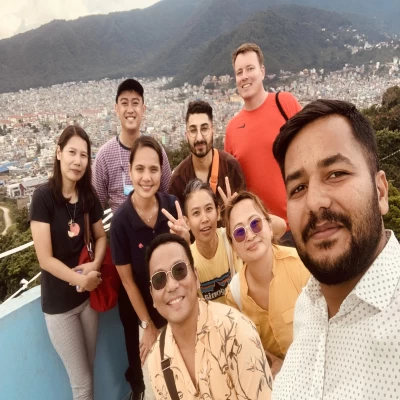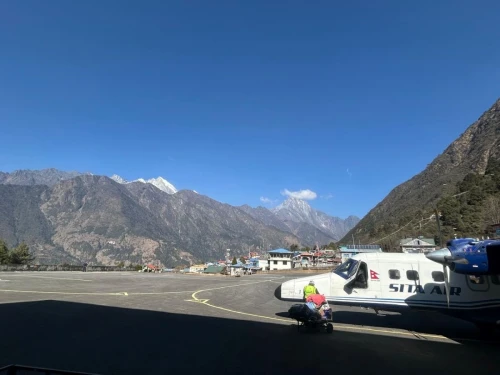How to Prepare for Manaslu Circuit Trek
Pre-Trek Preparation
Research and planning
So, it's going to take some research and some really good planning before even trying to set foot on the Manaslu Circuit to make the trek smooth and its experience fulfilling. First, one has to know the route. Trekking usually spans an average of 13 to 18 days, mostly starting from Soti Khola to Dharapani, though the sections of the trek can be spent traversing seemingly different landscapes and high altitudes.
The most notable one will be the highest point of the trek: the Larkya La Pass - at 5,160m above sea level. The Manaslu region doesn't have open routes; it is rather a restricted area, which means that the right permits for Manaslu trekking need to be obtained: Manaslu Restricted Area Permit (Rap), Annapurna Conservation Area Permit (ACAP) and Manaslu Conservation Area Permit (MCAP).
And trekkers in Nepal will have to travel with a licensed guide because that is a typical requirement of trekkers in the area of Nepal. It would also be wise to plan your trek in either of the trekking seasons that is spring (March to May) or autumn (September to November)- when the weather is at its most stable and the views are breathtaking. Another big aspect is budgeting.
You should factor in all necessary expenses from getting permits to the guide and the porter, accommodation, food, transportation, and any miscellaneous expenses. Taking the time to understand the logistical and environmental factors will not only help one avoid surprises but also enrich the overall experience.
Physical Conditioning
Get ready for the Manaslu Circuit Trek by working on your body and mind. Start 8–12 weeks ahead. You need strong stamina and power to cross rough lands and high hills above 3,000 meters. Do things for the heart, like hiking, running, biking, and swimming, to help your lungs get better. Train for strength, focusing on your legs, middle, and back, to wear a daypack over long roads. Do helpful moves like climbing stairs, squats, and lunges to copy trekking steps. Do yoga to stay steady and stop injuries. Good training lowers tiredness, keeps you safe, and makes the trek fun.

Gear & Packing
Packing smart is key for the Manaslu Circuit Trek due to changing weather and few supplies. Start with a strong, comfy backpack (40–60 liters). Choose light and must-have gear. Wear layers: sweat-wicking base layers, a warm jacket, a rain-proof shell, and warm underclothes help keep you comfy. Strong, worn-in hiking boots and good socks will help on rough trails.
You also need a four-season sleeping bag (good to -10°C), walking sticks, a good headlamp, sun safety gear, ways to clean water, and personal items. Pack a first aid kit, flip-flops, a quick-dry towel, and bags to keep things dry. Bring cash in small bills since there are no ATMs on the trail. Good packing makes the trek comfy, safe, and kind to nature.
For a complete checklist, follow this link:Packing List for Manaslu Trekking
Acclimatization Knowledge
It's all about acclimatization while trekking the Manaslu Circuit. Much of the trail is over 3,000 meters, and this can cause mountain sickness during the Manaslu Circuit trek. The body needs time to adapt to thin air, so the & quot; climb high, sleep low; principle is a smart way of dealing with it. Rest on rest days in towns like Samagaun (3,530m) and Samdo (3,860m) to acclimatize the body. Symptoms of mountain sickness, like headaches, nausea, and tiredness, should not be ignored. Going down to lower altitudes is best for sickness. Drink lots of water, feed yourself with healthy food, do not consume alcohol, and maybe take Diamox (consult a doctor first) to help. Proper prep makes for a safer, healthier, and more enjoyable trek in the stunning Manaslu region.
Logistics
Good planning is key for the Manaslu Circuit Trek because the area is remote with little infrastructure. The trip usually means a long ride from Kathmandu to Soti Khola or Machha Khola, and ends at Dharapani, where trekkers return by jeep or bus. You need permits like the Manaslu Restricted Area Permit and Annapurna Conservation Area Permit, which can only be obtained through a licensed trekking agency, and a guide must be with you. It's smart to book your guide and permits two weeks before. It's best to book teahouse stays early in busy months. Daily costs are around $30 to $50, depending on the plan and level of comfort you want. Good planning makes the trekking trip more fun and in line with the rules.
During the Trek Preparation
- Now get up well in advance in the day: So to get swimming with the good weather of the morning, keep beginning the trek between 7 and 8 o'clock, to get respite from the afternoon winds, and reach your camp in good light.
- Assist Your Pacing: Maintain an even, moderate pace, especially at higher altitudes to avoid pushing oneself too much whilst decreasing chances for altitude sickness.
- Stay Well Hydrated: Ensure you drink 3–4 liters of water daily. Use purification tablets or a filter to make the natural water sources safe for drinking.
- Eat Healthy: A Balanced diet with good calories to fuel long hiking days is going to keep you with energy. Dal Bhat, usually available in many teahouses in Nepal, is a popular, energy-rich Nepali meal.
- Altitude respect: Observe your body as it goes up and learn to listen. Any symptom showing AMS, take rests or acclimatization days when you feel the need.
- Trail Etiquette: Yield to uphill hikers, don't block paths, and be careful with pack animals like mules or yaks. Step aside on the mountainside, not on the cliff edge.
- Keep a Leave No Trace: Dispose of waste properly as much as possible, avoid single-use plastics, and leave the trail as pristine as you found it.
- Engage with Locals Respectfully: Learn a few basic Nepali phrases, request permission before taking any pictures, and behave sensitively regarding cultural norms, especially in monasteries and villages.
- Do Keep the Essentials Handy: Things like snacks, sunscreen, gloves, or rain jackets should sit in your daypack at the ready and near the changing weather or terrain.
- Watch the Weather Conditions: Always remain prepared for sudden shifts in weather, especially in high passes like Larkya La. Always check with your guide about the day's conditions.
Post-Trek Recovery from Manaslu Circuit
Physical Recovery
- Let Your Body Rest: Allow your muscles and joints complete recovery by taking 1 or 2 days as full rest after a trek.
- Keep Movements Gentle: A little walking, gentle stretching, or even yoga helps to induce blood flow without being overstuffed by the body's physiological requirements in physiology.
- Hydrate: Drinking plenty of water for rehydration is continued even after trekking at altitude for several days, where fluid intake may be minimal.
- Nourishing Meals: Replace energy lost during exercises with a complete protein, vegetables, and complex carbohydrates for muscle recovery.
- Massage or Spa Treatment: A massage should also be considered to relieve sore muscles and accelerate recovery; many trekkers in Nepal have their massage in Kathmandu or Pokhara, which is famous for this.
- Great Sleep: Rejuvenate with good sleep, which is a very important activity in energy restoration and tissue repair during the whole recovery process.
- Treat Minor Injuries: Treat blisters, sore knees, or bruises properly to avoid complications or infections.
- Not Immediately Intense Exercise: Give your body some reprieve from high-impact activity for several days to prevent burnout or injury.
Mental Reflection
- Note down Your Experience: Putting words to your thoughts, trials, triumphs, and learning moments from the trek aid you in digesting the journey and saving it for posterity.
- Tell Your Story: Talking with companions about the trek, posting pictures, or penning a blog can be a fulfilling activity in terms of self-reflection, the encouragement of others, and reliving the experience.
- Consider how your trek transformed you: perhaps it is all about how dearly the above-stated journey into the depths of mind and matter has affected you in exhaustion because it surely has taught you some life lessons in resilience, patience, or perspective.
Gear Maintenance
- Dry and Clean Everything: Wash clothes, sleeping bags, and equipment thoroughly, and make sure everything is completely dry before storing to avoid any mold, odors, or damage.
- Check for Damage: Inspect boots, backpacks, trekking poles, and zippers. If any gear is damaged, repair or replace it before your next adventure.
- Store Properly: Keep your equipment inside a cool and dry environment. Store sleeping gear inside storage bags and leave boots loosely laced to ensure that they do not lose their shape and longevity.

In Conclusion
Trekking through the Manaslu Circuit is not merely a passage through rugged, awe-inspiring landscapes scattered across Nepal; it is an egregiously personal occasion for growth, cultural immersion, and adventurous significance. Assuming the necessary preparations have been made, with a responsible outlook and an attitude of respect, the trek should leave euphoric impacts on your being and the communities visited along the way.
Mount Glory Treks is committed to assuring safe, enriching, and sustainable trekking experiences with local guides experienced in handling the local terrains and cultures. We will help you plan your Manaslu trip every step of the way, whether you are new to the trekking game or an age-old adventurer.
Book your Manaslu Circuit Trek at Mount Glory Treks today and take the first step towards experiencing a memorable Himalayan adventure of giving back.




 3 reviews
3 reviews.webp)





